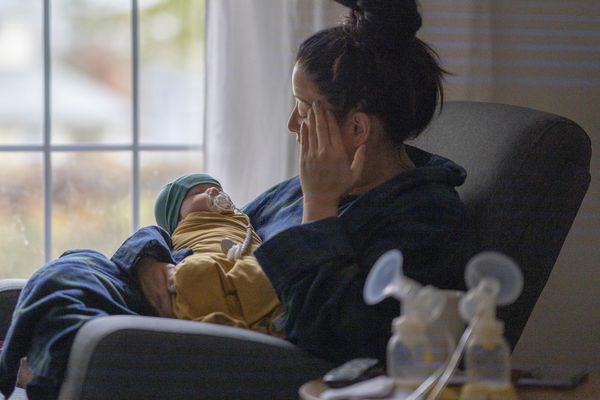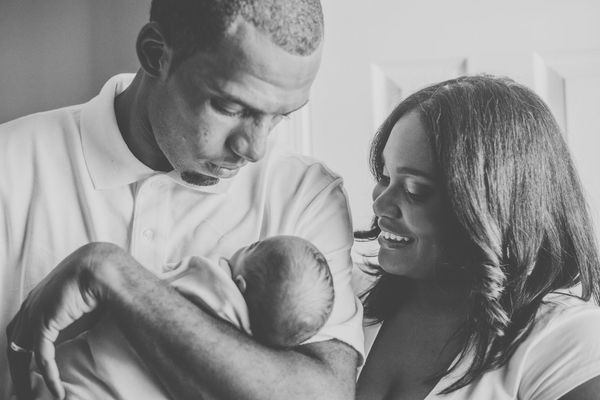If you’re a woman giving birth in the United States, you’re more likely to have a preterm delivery than women in most developed nations. If you’re Black or Native American, the chances of experiencing preterm birth are even higher, along with the risk of dying from pregnancy-related causes.
In 2021, a little over one in 10 babies born in the United States were born preterm, meaning before the 37th week of pregnancy.
While that rate of preterm births in the U.S. showed an improvement from previous years, especially from the high of 12.8% in 2006, rates of preterm birth remain higher in the U.S. compared to other developed nations.
In the most recent March of Dimes’ global map of preterm birth, the U.S. ranked poorly, having the sixth-highest number of preterm births worldwide, with a preterm birth rate of 12% compared to a global average of 11.1%. Using the same statistics, the March of Dimes, the World Health Organization and other research organizations listed the U.S. as having the sixth-highest number of preterm births in the world, with only Indonesia, Pakistan, Nigeria, China and India reporting more. Rounding out the top 10 were Bangladesh, Philippines, the Democratic Republic of the Congo and Brazil.
These numbers show how much work must be done to improve health outcomes for mothers and their babies. Babies born preterm are more likely to experience short- and longer-term health issues and face a higher risk of death before their first birthday.
Why is the U.S. doing worse than other developed nations when it comes to the health of mothers and babies? Researchers point to multiple factors, including:
Healthcare systems: Most developed nations offer universal access to healthcare, while the U.S. does not. A lack of health insurance can limit access to quality healthcare both before and during pregnancy, which can increase the risk of preterm birth. One study found that recipients of Medicaid, the public healthcare program for low-income individuals, were more likely to have preterm births.
Structural factors: Social determinants of health — the environments where people work, live, play and interact — also contribute to the quality of healthcare one receives during pregnancy and beyond. That can include the ability to access healthcare services in one’s community and the overall quality of life in various communities.
“Preterm birth is a very complex phenotype with potential contributions from genetics, inflammation, infection, metabolic factors and stress,” said Dr. Marina Sirota, Ph.D., associate professor at the Bakar Computational Health Sciences Institute and associate professor of pediatrics at the University of California, San Francisco.
Racism: Black and Native American women are 60% more likely to have a preterm birth compared to white women, with preterm birth rates for Black mothers hitting 14.4% and Native American mothers at 11.6% in 2021. Maternal deaths have more than doubled during the past 30 years, with more than 700 women dying of pregnancy-related causes each year. Black women were three times more likely to die than white women, and Black and Native American babies are twice as likely as white babies to die before their first birthdays.
“While there might be genetic contributions that partially explain racial and ethnic disparities in preterm birth risk, the potential effects of racism and structural discrimination might result in adverse pregnancy outcomes, especially for Black and American Indian/Alaska Native women,” Sirota said.
Consider this: Studies examining the higher rate of maternal death in Black women found that the typical factors that reduce negative health outcomes — such as a higher socioeconomic status or higher education — had little to no effect for Black women. Black women with a college education or higher were still 1.6 times more likely to die of pregnancy-related causes than white women with less than a high school diploma.
Age: Fertility rates for women over 30 in the U.S. have been rising since 1990, while fertility rates for women under 30 have declined. That means more women are now giving birth during their 30s and 40s. Some research suggests the risk of preterm birth and other negative pregnancy outcomes rises with age.
“More women are having children later in life and more women are entering pregnancy with chronic conditions such as hypertension, obesity, diabetes and cardiovascular disease, all of which contribute to increased risk of maternal mortality,” Sirota said.
Improving maternal outcomes
On the policy front, multiple members of Congress have introduced bills, collectively called the Black Maternal Health Momnibus Act of 2021, to build on existing legislation to address health issues affecting mothers of color. Community health approaches that provide more comprehensive care for women in familiar settings have also contributed to improved outcomes for mothers and their babies. Those can include group prenatal care, doulas to provide support during labor and the postpartum period, and midwifery care.
Databases, including the March Of Dimes database for preterm birth research, are making it easier for researchers to identify trends and collaborate to find solutions. Sirota’s group is among those examining data from medical records to see what factors could be contributing to preterm birth and maternal complications.
“We hope that by integrating different types of data from a diverse patient population, we can impact diagnostic and therapeutic strategies to improve the lives of all moms and babies,” Sirota said.
On an individual level, women can reduce their risk of preterm birth by maintaining a healthy weight before and during pregnancy; avoiding smoking, drinking and drug use; receiving prenatal care; reducing stress; and treating any existing chronic health conditions, including high blood pressure, diabetes and mental health concerns.
This resource was created with support from Covis.
- Born Too Soon ›
- Preterm Delivery Puts Moms at Risk, Too ›
- Clinically Speaking: Questions to Ask Your Healthcare Provider About Preterm Birth ›
- Vaccines Help Close Lifesaving Maternal Immunization Gaps - HealthyWomen ›
- Overall Preterm Birth Rates Increased - HealthyWomen ›
- 15 Minutes With: Midwife Jennie Joseph - HealthyWomen ›







